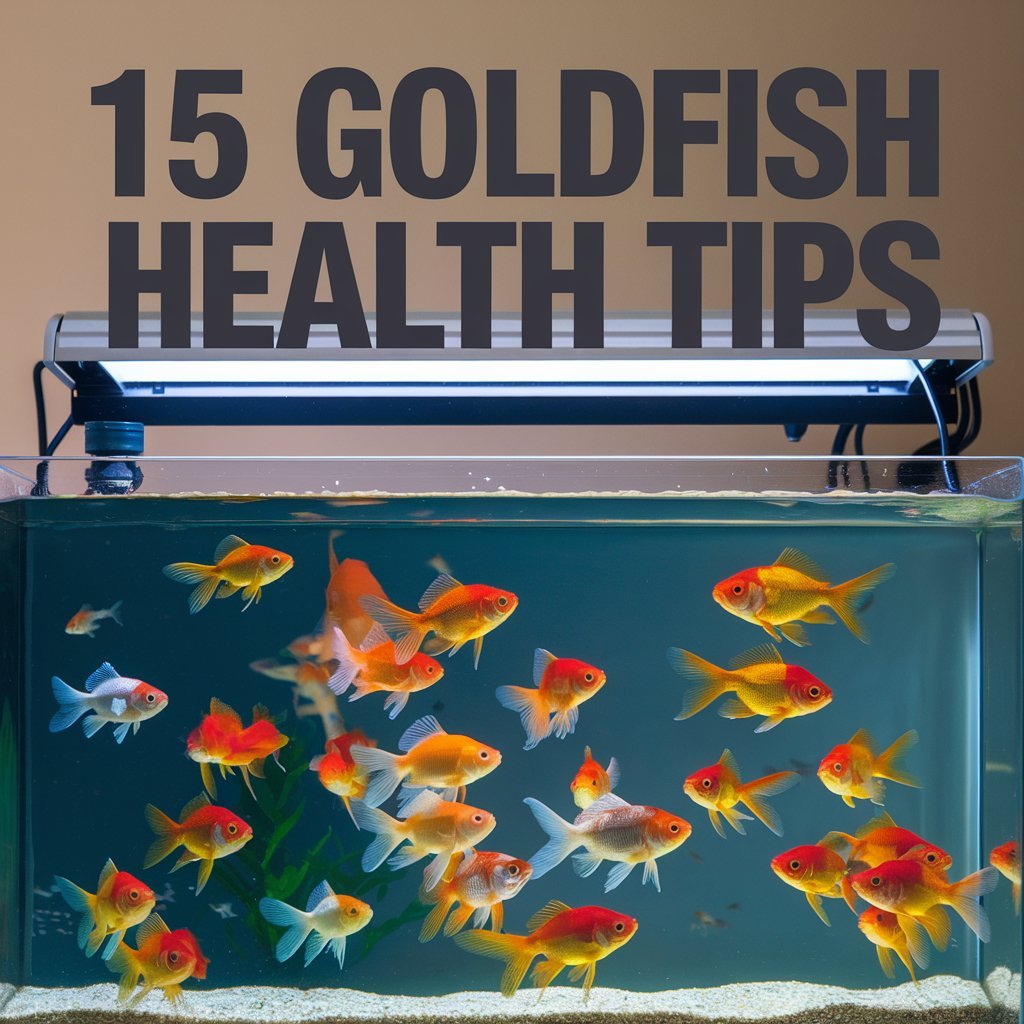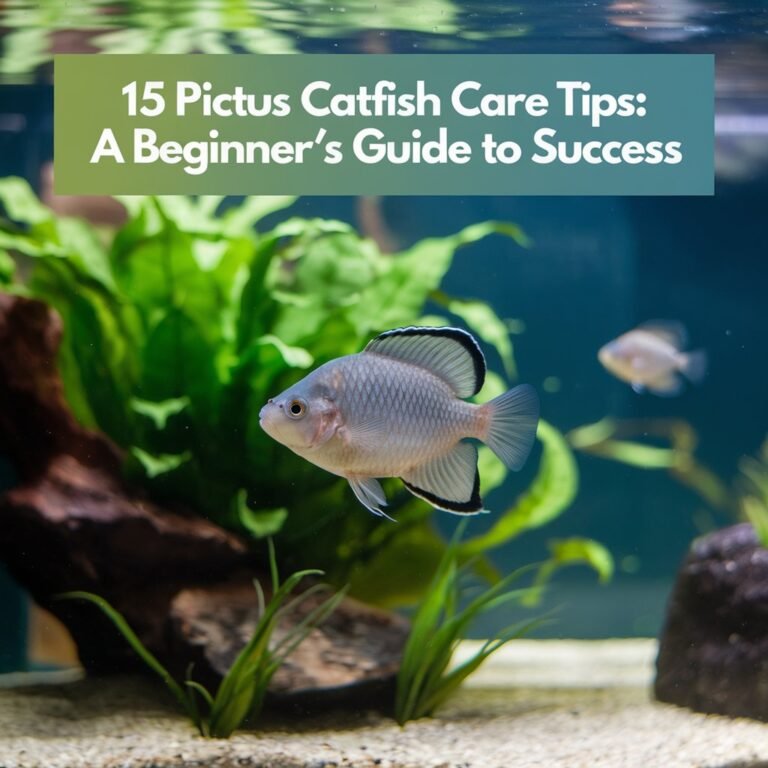15 Goldfish Health Tips: A Comprehensive Guide to a Healthy Aquarium
When you decide to bring home a goldfish, it’s exciting to envision a beautiful aquatic display. You probably want your goldfish to thrive under your care. The fact is, though, a typical goldfish owner unwittingly undermines their fish’s well-being, despite best intentions.
Before we share expert strategies on fostering your pet goldfish’s ultimate potential – staying on track, diagnosing impending illness – here are basics. Effective management covers diets comprising varieties other than mass-made feed for richer choices: That realization set as part pre-aide lesson why nutrient enhancement coupled multiple selection stays big which.
In A Nutshell
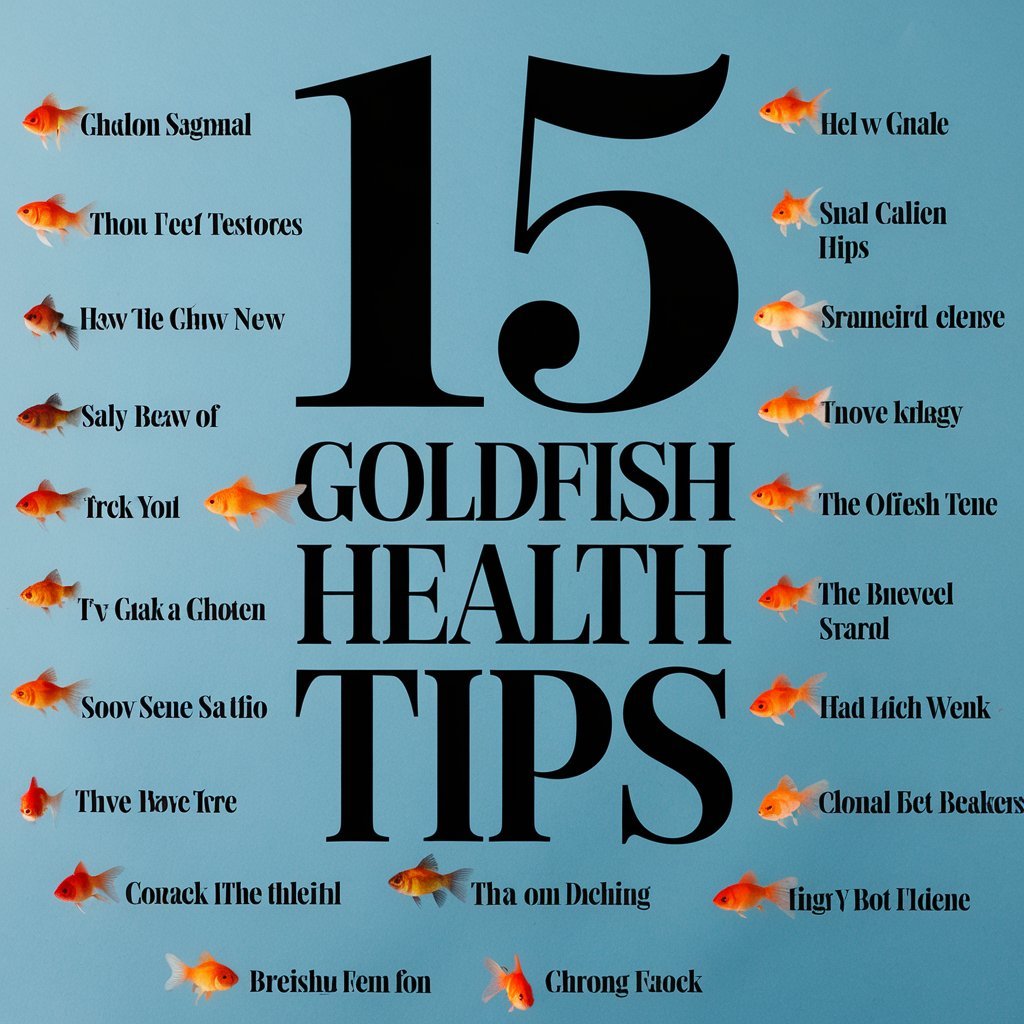
- Provide a varied diet including high-quality commercial flakes, live and frozen foods, and fresh vegetables for goldfish.
- Maintain proper water temperature between 65°F and 75°F to prevent sudden changes and stress on goldfish.
- Monitor water quality regularly, testing for ammonia, nitrite, and nitrate levels, as well as pH and water hardness.
- Perform regular partial water changes and introduce hardy plants to facilitate beneficial bacteria growth for a healthy tank.
- Handle goldfish gently and observe them daily to detect early signs of illness or stress for prompt action.
Provide a Balanced Diet
To keep your goldfish thriving, it is vital to feed them a balanced diet that meets their nutritional needs.
A varied diet that includes high-quality commercial flakes or pellets, as well as live and frozen foods, is ideal. You can supplement their diet with fresh vegetables such as peas, zucchini, and spinach. Live brine shrimp are also a nutritious addition and can be fed to your goldfish 2-3 times a week.
When feeding your goldfish, it is paramount to avoid overfeeding. Overfeeding can lead to digestive issues and poor water quality.
Feed them only what they can consume within 1-2 minutes, 2-3 times a day. You should also rotate their foods to guarantee they receive a broad spectrum of nutrients. A good rule of thumb is to provide a mix of 50% high-quality flakes or pellets, 20% live or frozen foods, and 30% vegetables.
Maintain Proper Water Temperature
Maintaining the right water temperature is crucial for your goldfish’s health and well-being.
Goldfish are cold-blooded animals, meaning their body temperature is regulated by the water they live in. They thrive in temperatures between 65°F and 75°F (18°C and 24°C). Avoid placing their tank near direct sunlight, radiators, or air conditioning vents, as these can cause temperature fluctuations.
You should also be aware of the water cycles in your tank. During the day, the water temperature may rise, while at night it may drop.
This natural fluctuation is normal, but sudden changes can be stressful for your goldfish. To minimize temperature fluctuations, use a thermometer to monitor the water temperature and adjust the tank’s location or use a heater if necessary.
Regularly check the water temperature to confirm it remains within the ideal range. Avoid sudden changes, as this can cause stress to your goldfish.
Choose the Right Tank Size
Your goldfish‘s environment plays a significant role in their overall health, and tank size is another critical factor to ponder.
When choosing the right tank size, guarantee you ponder the fish capacity, as overcrowding can lead to water quality issues and stress on your goldfish. A general rule of thumb is to provide at least 20 gallons of water per fish.
However, this can vary depending on the size and type of goldfish you have.
Tank shapes also play a significant role in determining the overall tank size.
Long, rectangular tanks are often better than tall, narrow ones, as they provide a larger surface area for your goldfish to swim and breathe. Additionally, avoid tanks with sharp corners or small crevices, as they can cause injury to your fish.
When selecting a tank, weigh a minimum tank size of 30 gallons for the first goldfish, with an additional 10-20 gallons for each subsequent fish.
This will help make certain your goldfish have enough space to thrive and stay healthy.
Cycle the Tank Properly
Setting up a new tank can be an exciting experience, but it’s essential you plunge into the process prepared.
One critical step often overlooked by new goldfish owners is properly cycling the tank. Cycling a tank allows beneficial bacteria to establish, breaking down fish waste into harmless compounds.
Without this process, you risk introducing fish to an environment that’s toxic to them. Adequate cycling also helps determine fish compatibility, as introducing too many or the wrong types of fish at once can hinder tank maturity.
This is particularly true for goldfish, which can be messy and require more biological filtration than other fish.
It typically takes 2-4 weeks for a tank to fully cycle, but the time can vary depending on tank size and temperature.
To cycle a tank, start by setting up your tank, adding a small amount of food, or some raw shrimp, and monitoring ammonia levels.
Perform regular partial water changes, and introduce hardy plants that help facilitate beneficial bacteria growth.
When the ammonia and nitrite levels are under control, you’ll know it’s time to introduce your new goldfish friends to their home.
Monitor Water Quality Regularly
Regularly testing the water in your goldfish tank is crucial for ensuring the health and well-being of your fish.
You should perform water testing at least once a week to monitor the aquarium chemistry and make adjustments as necessary. This involves checking the levels of ammonia, nitrite, and nitrate, as well as the pH and water hardness.
You can use a water testing kit to check these parameters and compare the results to the recommended levels for goldfish.
If you notice any significant changes or deviations from the ideal levels, you should take corrective action to restore balance to the tank. For example, if the nitrate levels are too high, you may need to perform a partial water change to dilute the concentration.
Avoid Overcrowding the Tank
To avoid creating an unhealthy environment, resist the urge to populate the tank with as many fish as possible – overstuffing leads to compromised water quality.
Overcrowding your goldfish tank can lead to a buildup of toxins, stress on your fish, and an increased risk of disease.
When deciding on the number of fish to keep, you must take into account the tank capacity.
A general rule of thumb is to stock one inch of fish per gallon of water. However, this rule has its limitations, as it doesn’t take into account the adult size of the fish or their activity level.
Goldfish, in particular, can grow up to six inches or more, so it’s vital to provide ample space for them to swim.
Fish schools can thrive in a well-maintained tank, but overcrowding can disrupt their natural behavior.
To safeguard the health and well-being of your goldfish, maintain a suitable stocking density.
This won’t only prevent water quality issues but also allow you to observe your fish swimming freely and naturally.
Always prioritize your fish’s health and safety when deciding on the number of fish to keep in your tank.
Create a Stimulating Environment
Incorporating various elements into your goldfish tank can create a stimulating environment that promotes their physical and mental health.
You can achieve this by adding aquatic scenery that mimics their natural habitat. Include rocks, driftwood, or sunken ships that provide visual interest and create movement in the water.
This type of scenery also helps to reduce stress and boredom, as goldfish can explore and interact with their surroundings.
Adding water features is another way to create a stimulating environment.
Consider installing a filter that creates a gentle current or a small fountain that produces ripples on the water’s surface.
These features help to circulate the water, increasing oxygen levels and preventing stagnation.
They also create a dynamic environment that keeps your goldfish engaged and active.
By incorporating these elements, you can create a tank that challenges and stimulates your goldfish, promoting a healthier and happier life.
A well-designed tank will keep your goldfish active, engaged, and thriving.
Provide Hiding Places and Plants
A well-planned goldfish tank should include hiding places and plants to provide your pet with a sense of security and comfort.
Hiding places, such as commercial or DIY decorations, can help reduce stress in goldfish. You can choose from various Aquatic Decor options, including plants, rocks, and treasure chests.
These decorations not only provide hiding places but also create visual interest and add to the overall aesthetic of the tank.
When selecting plants, consider a Plant Variety that’s suitable for aquariums and goldfish.
Live plants like Java moss, Anacharis, and Hornwort are great options. They help maintain water quality, provide food, and create a natural environment for your goldfish.
Artificial plants can also be used if you’re concerned about maintenance or compatibility. Be sure to choose plants that are safe for your goldfish and won’t cause harm if ingested.
Establish a Regular Feeding Schedule
By establishing a regular feeding schedule, you’ll help maintain your goldfish’s overall health and prevent overeating or under-eating.
This involves determining the best food timing for your goldfish and setting a consistent meal frequency. Generally, goldfish have small stomachs and should eat 2-3 meals per day, as overeating can lead to digestive problems.
You’ll also want to ponder your goldfish’s natural feeding behavior, which typically takes place at dawn and dusk.
Mimic this behavior by feeding them at the same time every day, usually during the morning and early evening. Meal frequency and duration may also need to be adjusted depending on your goldfish’s age, size, and activity level.
Maintaining a regular feeding schedule requires monitoring and adjustments to food intake, water conditions, and other factors affecting your goldfish’s well-being.
Avoid changes to meal timing without evaluating their potential impact on your goldfish’s overall health and making the necessary adjustments accordingly.
Establishing and adhering to a feeding routine contributes substantially to the longevity and happiness of your goldfish.
Avoid Overfeeding Your Goldfish
Several key indicators signal that your goldfish is overfed.
If you notice your goldfish has a swollen belly, labored breathing, or lethargic behavior, it’s likely due to excessive food consumption. Overfeeding can lead to digestive issues, poor water quality, and even shorten your goldfish’s lifespan.
To prevent overfeeding, you need to monitor your goldfish’s food quantity and meal frequency.
Feed your goldfish 2-3 times a day, only as much as they can consume within 1-2 minutes. This will help prevent leftover food from decomposing and polluting the water.
Also, consider the size of your goldfish and the type of food you’re providing. Goldfish have small stomachs, so they require small, frequent meals. Avoid feeding them large amounts of food at once, as this can lead to overeating.
Perform Regular Tank Maintenance
Maintaining ideal water quality is just as important as monitoring your goldfish’s food intake.
You’ll need to perform regular tank maintenance to guarantee your goldfish stays healthy and happy. Start by testing the water for ammonia, nitrite, and nitrate levels. You can use a water test kit to check for these parameters and make adjustments as needed.
Regularly clean the gravel and decorations in your tank to prevent the buildup of debris and bacteria.
Replace any old or damaged decorations with fresh ones to improve tank aesthetics. This won’t only keep your tank looking its best but also provide your goldfish with a stimulating environment.
You should also replace about 10-20% of the tank water every week to maintain superior water quality.
Quarantine New Goldfish First
When introducing a new goldfish to your tank, it’s crucial that you isolate it first to prevent the spread of diseases and parasites.
Fish segregation is essential for keeping your new and existing fish healthy. Before introducing a new goldfish, it’s best to have a quarantine routine in place.
Designate a separate tank specifically for isolating new goldfish, equipped with all the necessary filtration systems, heat sources, and food supplies.
Before moving your new goldfish into this quarantine tank, thoroughly disinfect all the equipment, and allow it to run for 24 hours before adding your fish.
Place the goldfish in this tank and allow it to settle in and observe for signs of diseases and parasites.
Feed and maintain it separately, to safeguard against no bacteria being transmitted from its quarantine to the main tank.
During quarantine, which is ideally around two weeks, also get a nitrate cycle up to protect the health and well-being of the goldfish before release.
Handle Your Goldfish Gently
When handling your goldfish, vitally, you must do so gently to prevent causing them undue stress or injury.
Fish handling requires care and attention to detail, as rough handling can cause physical harm and lead to long-term health problems.
To handle your goldfish gently, start by wetting your hands before scooping them up, as dry hands can cause friction and stress.
Next, carefully scoop up your goldfish in a soft-mesh net, taking care not to touch their fins or tail.
Support their body from underneath, allowing them to swim freely within the net.
When lifting your goldfish out of the water, do so slowly and carefully, minimizing splashing and sudden movements.
A gentle touch is essential when handling your goldfish, as they’ve sensitive scales and fins that can be easily damaged.
Avoid squeezing or holding them too tightly, as this can cause injury and stress.
By handling your goldfish gently and with care, you can help guarantee their health and well-being, and prevent unnecessary stress and injury.
Regular handling can also help your goldfish become more tame and relaxed in your presence.
Provide Adequate Tank Lighting
Providing adequate tank lighting is essential for your goldfish’s health and well-being.
Goldfish need a balance of light and darkness to maintain their natural circadian rhythms. You can achieve this balance by using a combination of lighting options, such as LED or fluorescent lights, and simulating day and night cycles.
When choosing lighting options, consider the type of plants you have in your tank.
If you have live plants, you’ll need to provide them with sufficient light to photosynthesize. However, be careful not to overlight, as this can promote algae growth. Aim for 10-12 hours of light and 12-14 hours of darkness per day.
Natural sunlight is also beneficial for your goldfish, but be cautious not to place the tank near direct sunlight, as this can cause water temperature fluctuations.
East- or west-facing windows are ideal for providing gentle, indirect sunlight. By providing adequate tank lighting, you’ll help create a healthy environment for your goldfish to thrive.
Remember to adjust the lighting schedule according to the season to mimic natural daylight patterns.
Observe Your Goldfish Daily
Observing your goldfish daily is crucial for detecting early signs of illness or stress. It allows you to notice any changes in fish behavior, such as lethargy, loss of appetite, or erratic swimming patterns.
You should spend a few minutes each day watching your goldfish, looking for any unusual behavior or physical changes. Check for signs of illness, injury, or stress, such as labored breathing, rapid breathing, or visible wounds.
Regular observation also helps you monitor the effectiveness of water changes. After a water change, observe your goldfish for signs of stress or discomfort.
If you notice any adverse reactions, you may need to adjust the water change process or frequency. Additionally, observing your goldfish daily helps you identify any potential tank issues, such as water temperature fluctuations or equipment malfunctions.
Frequently Asked Questions
Can I Keep My Goldfish With Tropical Fish Together?
When deciding to keep your goldfish with tropical fish, you’re considering tank compatibility and species separation. Typically, goldfish require cooler temperatures, while tropical fish prefer warmer waters, making them incompatible tankmates for ideal health.
Why Is My Goldfish’s Color Fading Quickly?
You’re noticing your goldfish’s color fading quickly, which might be due to color loss caused by stress, poor diet, or genetic predisposition. Check water quality and feeding habits to address potential underlying issues immediately.
How Do I Breed Goldfish in My Home Aquarium?
You’ll need to master breeding techniques and tank preparation to successfully breed goldfish at home. Start by selecting healthy, mature fish and setting up a separate breeding tank with ideal water conditions and hiding places.
What Causes My Goldfish to Have Excessive Sliming?
You’re likely dealing with excessive sliming due to poor water quality or tank overcrowding, causing stress in your goldfish and leading to mucus buildup, which they release to protect themselves from infections and irritation.
Can Goldfish Hear and Recognize My Voice?
You might be surprised to know that goldfish possess a unique auditory system, allowing them to detect vibrations in the water, and research suggests they can recognize your voice through Fish Communication and Voice Recognition.
FInal Verdict
By following these 15 tips, you’ll be well on your way to creating a healthy environment for your goldfish. You’ll provide a balanced diet, maintain proper water temperature, and guarantee a suitable tank size.
Regular water quality checks, proper tank cycling, and gentle handling will also contribute to your goldfish’s well-being. With these best practices in place, you’ll be able to keep your goldfish happy and thriving in their aquatic home.
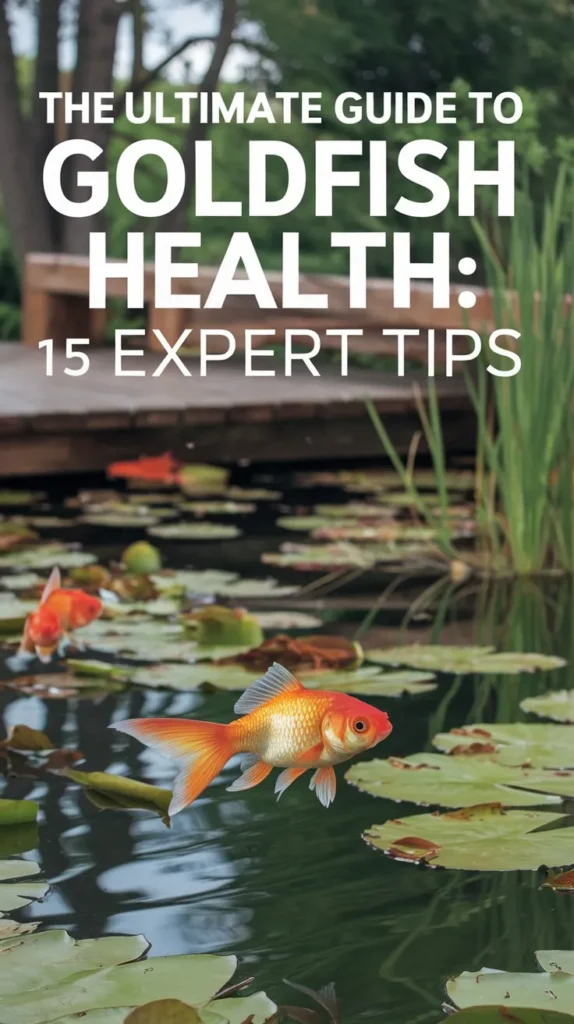

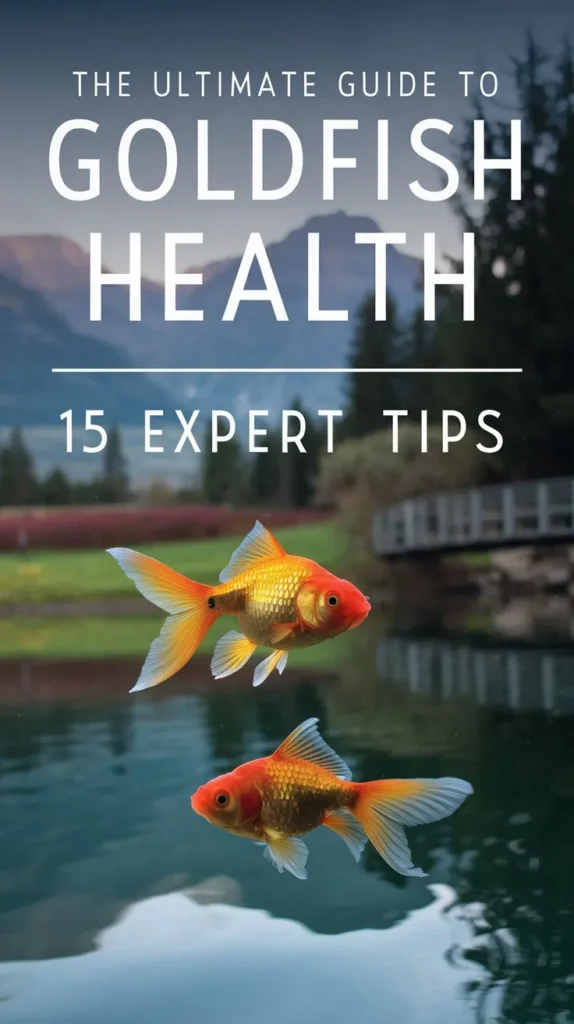
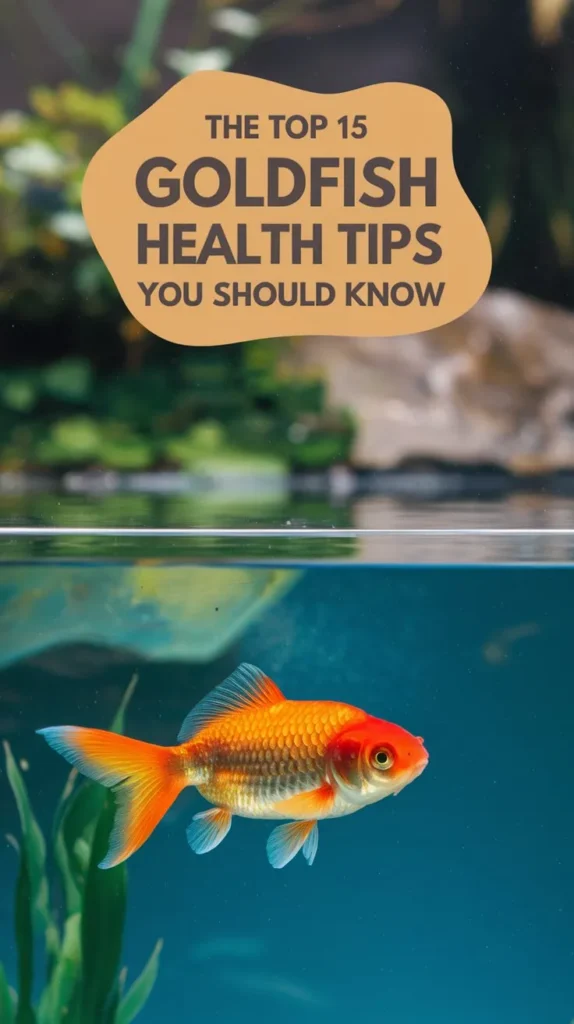
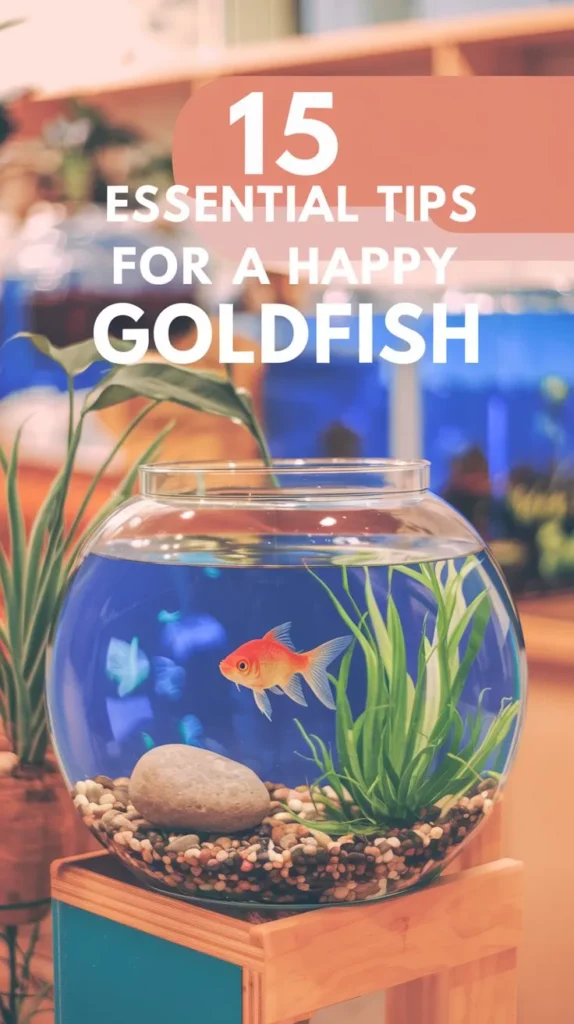
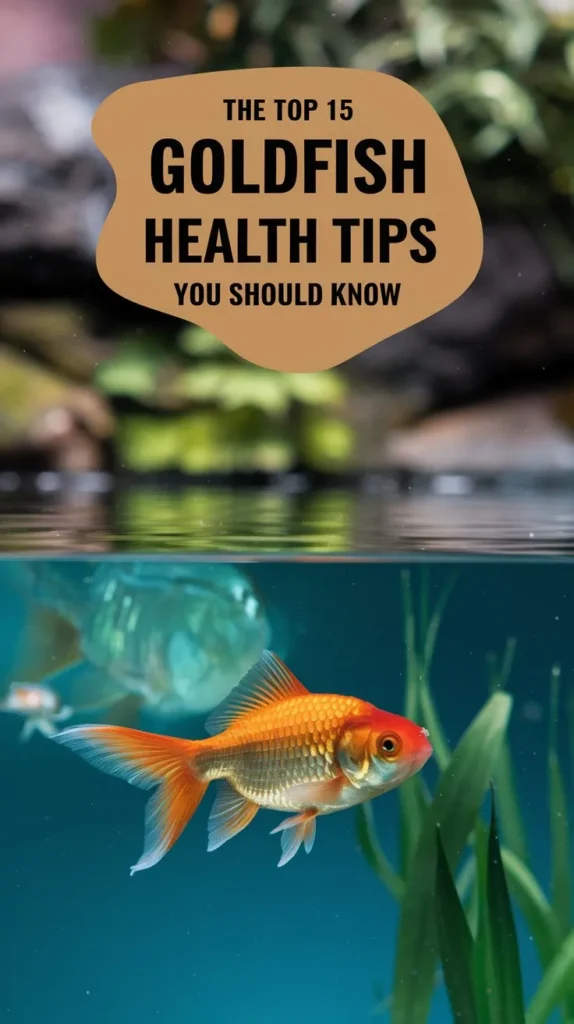
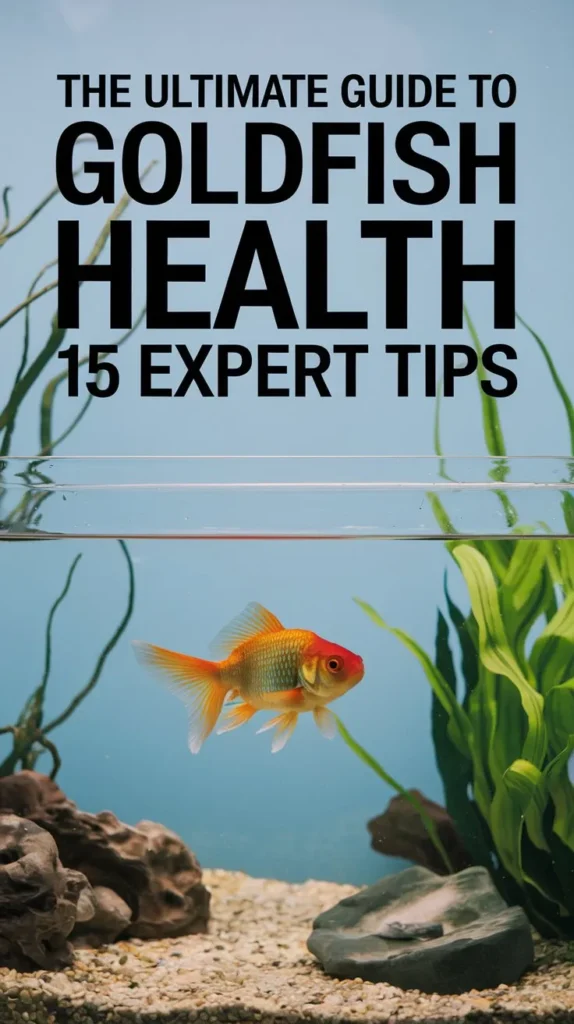
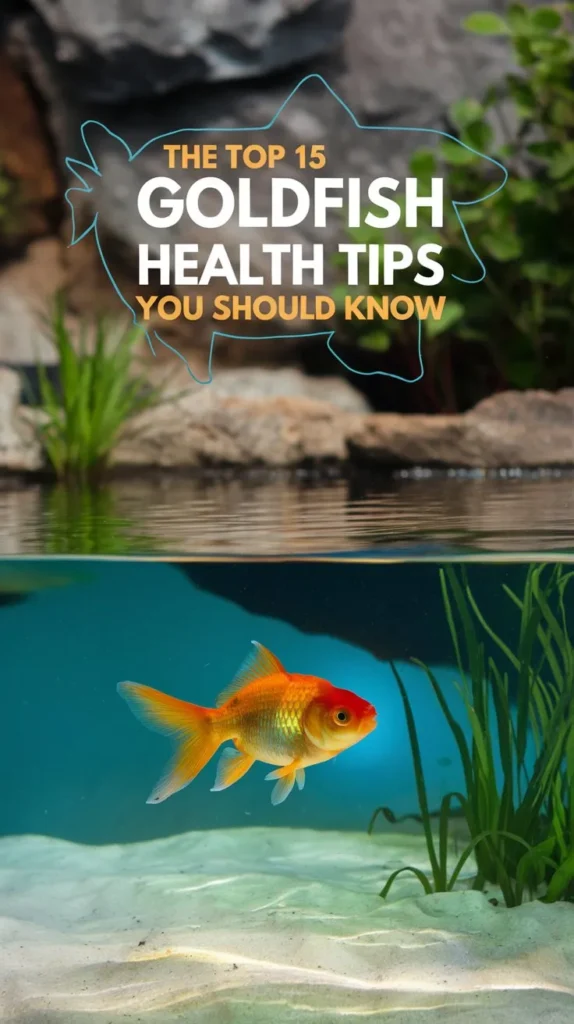
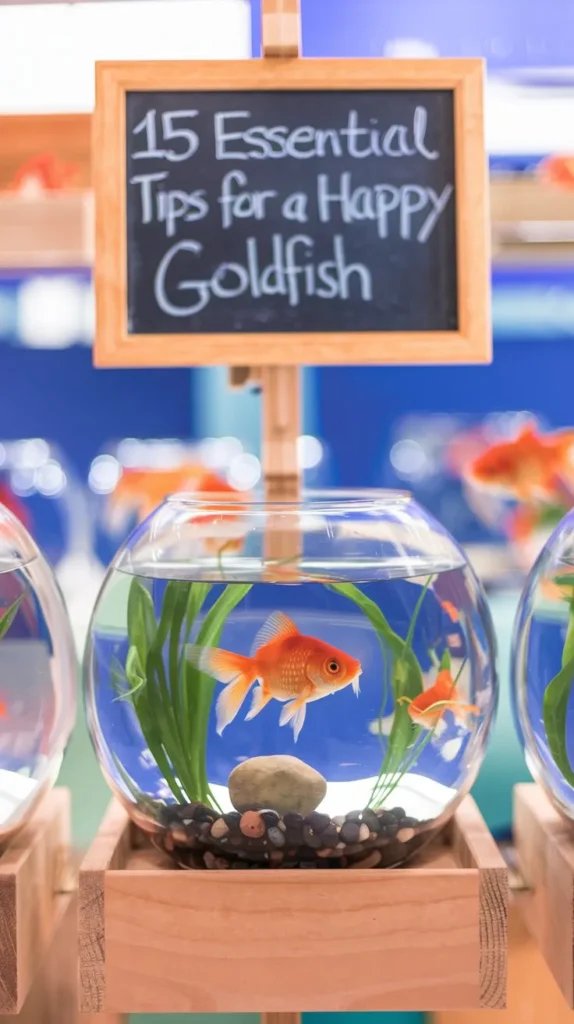
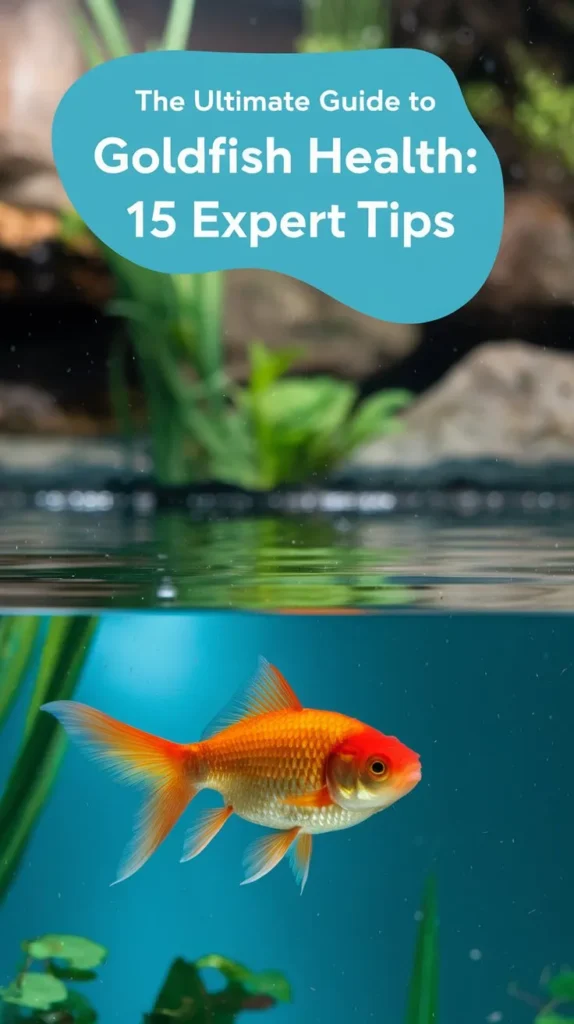
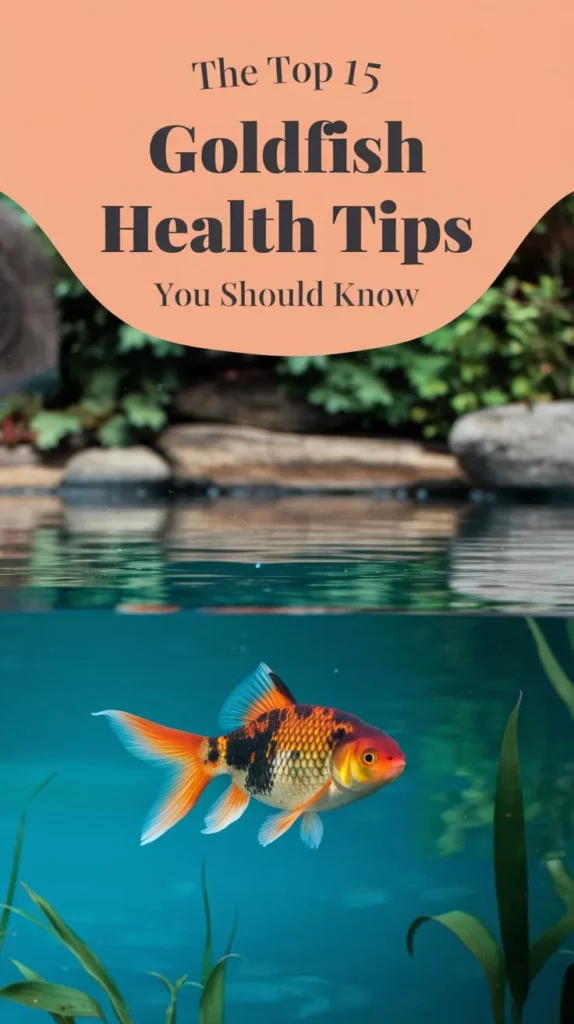

Hello, I’m Aria Cooper, the heart and soul behind Swimmy Buddies. As a devoted fish aficionado, I share my aquatic adventures and expertise to inspire your own underwater explorations. 🐠🌊

